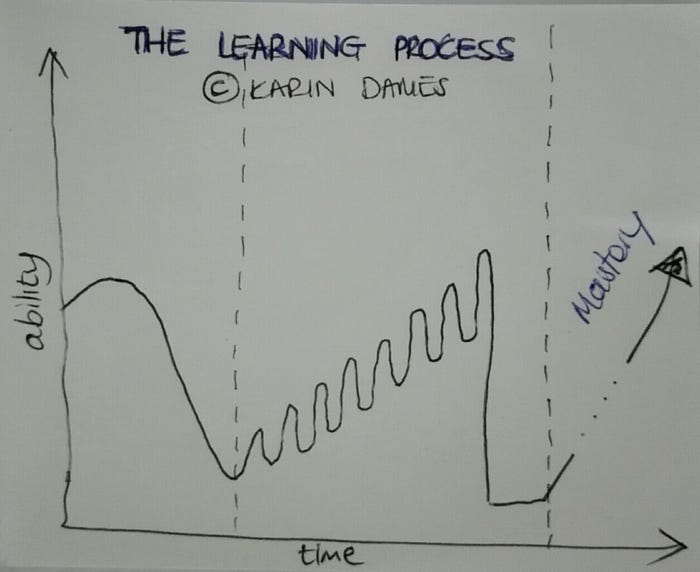
Redefining the learning process
In a previous post I explored the idea of what a meaningful workplace looks like, and one reader added a comment to suggest training as another element of a meaningful workplace (thank you for the comment, Diana!). Being a lifelong learner myself and passionate about education, I wholeheartedly agree that learning should be part of a meaningful workplace, and this post is dedicated to explore what learning looks like to me.
The Certification Calamity
Our education system are not producing a lot of thinkers and innovators, and looking at the biographies of really successful people, including Bill Gates, Mark Zuckerberg and my personal favorite and role-model, Richard Branson, most were high school or University drop-outs. Thank goodness! That means there is hope for me! So why doesn’t training produce these kind of thinkers?
The majority of certifications available teach you great skills, yet it doesn’t provide adequate exposure to apply the learnt skills.
99% of the time you can’t take a stock standard strategy, methodology or tool and implement it following a set of predefined steps as you’ve learnt in the training course you attended. Scrum for example, is a framework, yet people often use it as a checklist implementing all the suggestions but without necessarily understanding why it works.
Not understanding why in essence means that you change the terminology, but not your thinking and habits.
With the right certification, you are most likely to get the job you want, but this causes a lot of unecessary stress and problems later when you aren’t actually able to do the work and there is very little room for error, making it even more risky to try out something new.
It is not good for the employee, and it is definitely not good for the employer and ultimately it is not good for the certifying body. So how can we do it better?
The Learning Process
Don’t get me wrong, there is nothing wrong with getting any certification, and personally I’m addicted to researching the contents of all the good certifications out there, even though I might not have the paper to proof it. To me however, competency only comes once you’ve successfully used it in a real project a number of times.
Obtaining a degree or certificate is in my opinion merely the first phase of a three phase learning process to mastery of any subject. Below is a rough scetch of how I see the entire learning process, followed by an explanation and steps towards mastery.

The learning process
The learning process
The first phase of training is to move towards awareness. The outcome of a certification thus to me means that you will be able to ask the right questions, but not necessarily able to find suitable answers easily, especially when presented with slightly different applications of the problem.
But, like any good software implementation, there first needs to be some customizations before it will work effectively in your specific organization. We’re often not taught how, or there is simply no time or space to try out different settings before we know which one works the best when we are back in the workplace.
So we fall back into our old habits and the newly acquired knowledge soon gets forgotten.
For training to become learning, you need to move to phase two of the learning process, which is a long, tedious and hard process of integrating the knowledge by trying and failing consistently, gradually getting better with each try, until finally you reach mastery and thus full competence.
In essence, phase 2 is a process of customization and habit building, allowing the new skills to become part of the current work environment in small, incremental changes.
This is hard work and most companies who send employees on training will stop after the first failure.
However, what needs to happen is a constant process of trying and failing until you get to a stage where you just want to give up. This is a necessary part of the learning process, and indicates that you are on the verge of mastery. But first you need some rest and restoration before you try just one more time and suddenly everything is easy.
When it is easy, you know you’ve reached phase three of the learning process and is rapidly on your way to mastery.
Conclusion
In order to master any field, you need to allow your team to integrate the newly acquired skills following a process of trying and failing, until it becomes easier, and until your problem is resolved.
Effective learning is not about how fast or how much training you complete, but how flexible you are in applying your knowledge to different problems.
Originally published on Medium: https://medium.com/p/the-learning-process-redefined-6f216fe8717b
